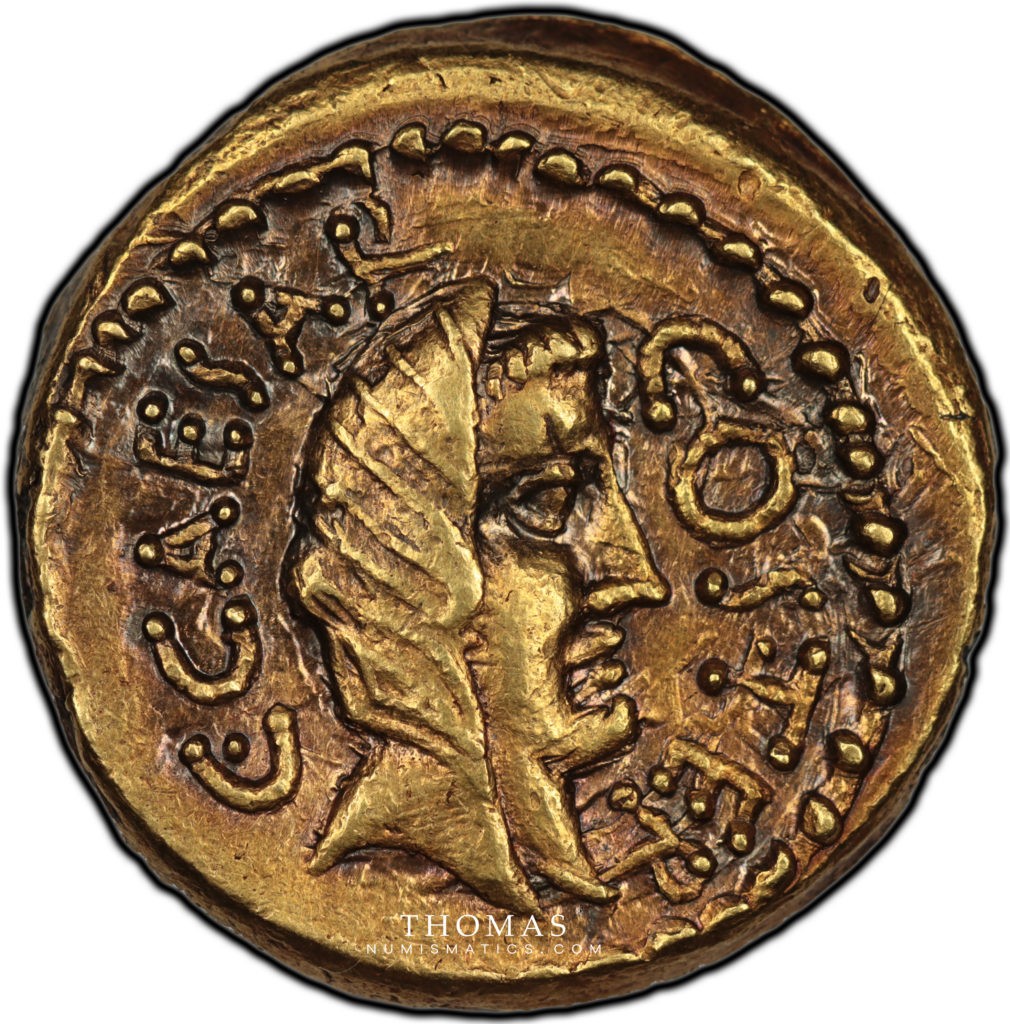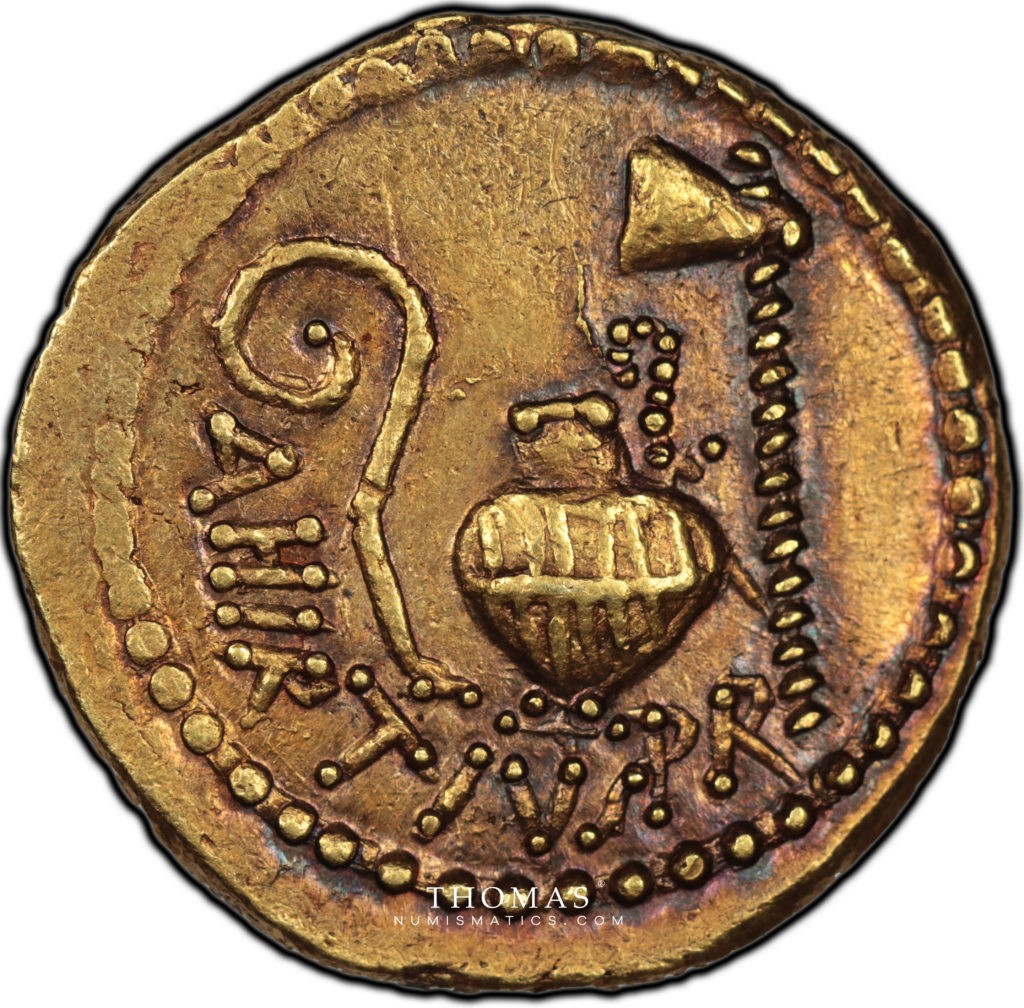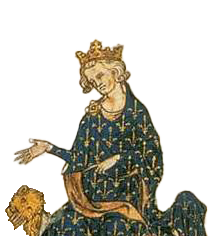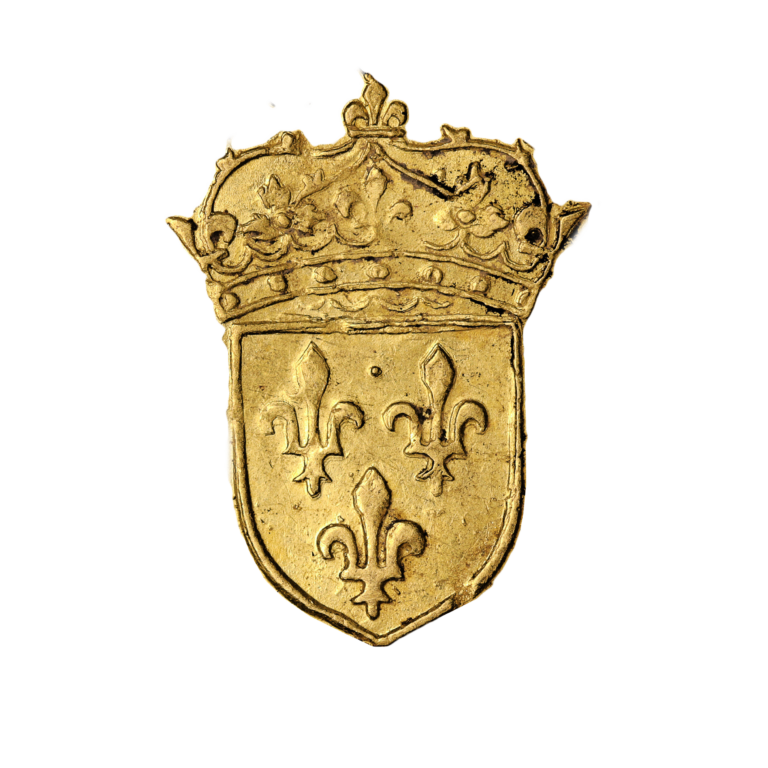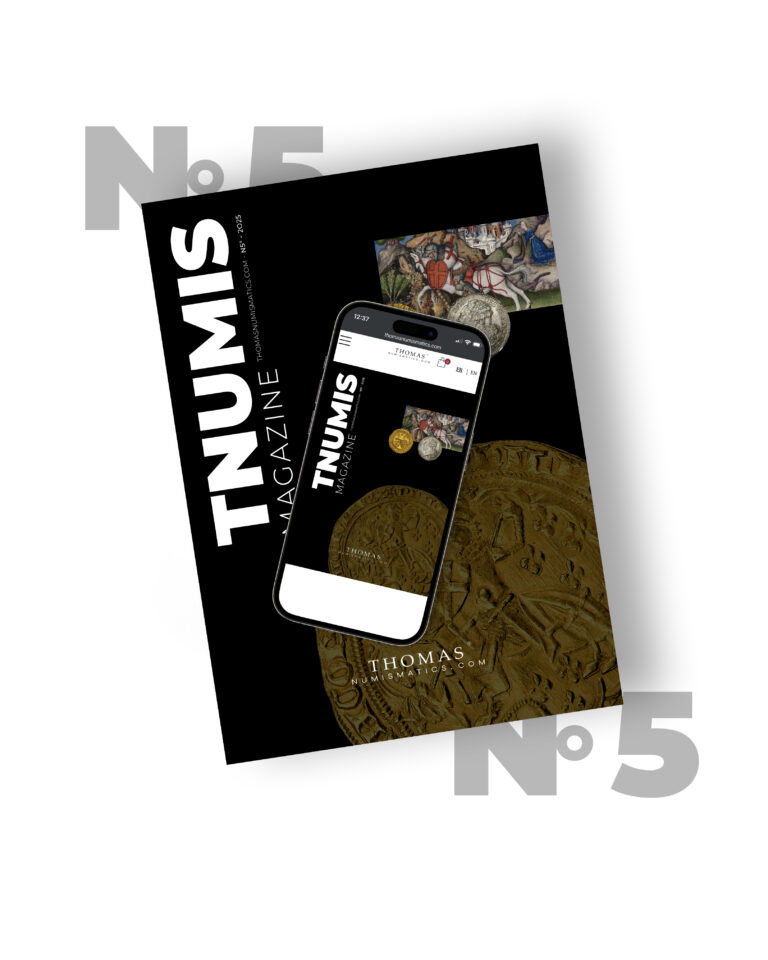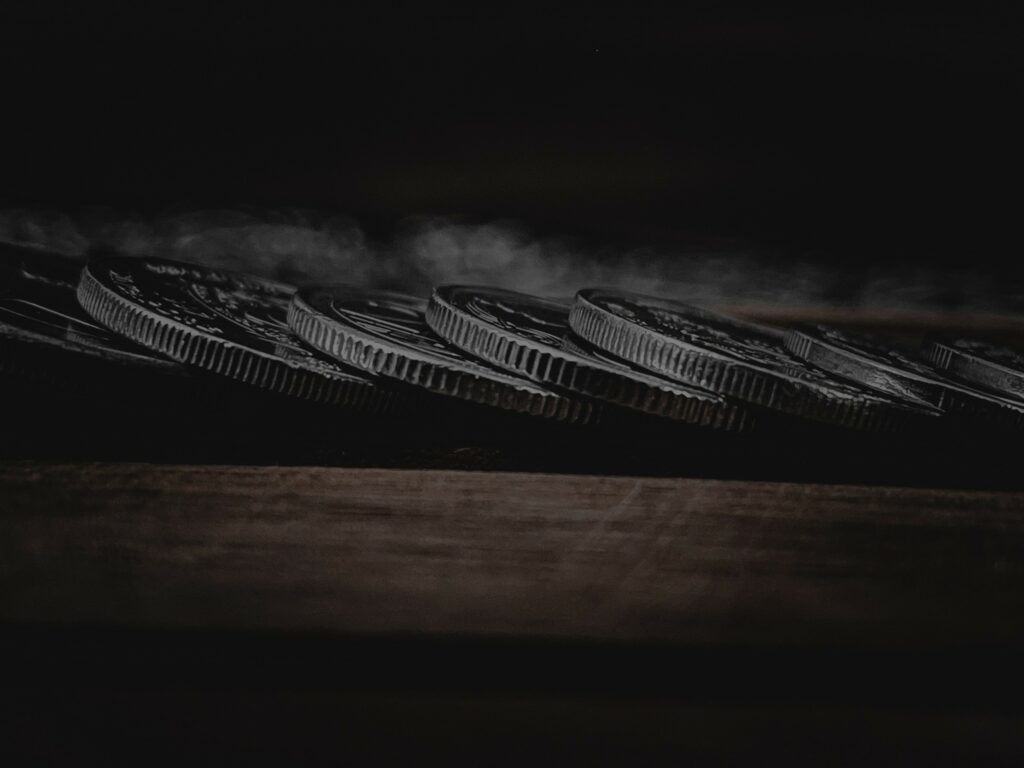
Discover all the news and articles from TNUMIS Magazine exclusively
The treasure of Boscoreale
Boscoreale is an Italian town, located a few kilometers from Naples and bordering Pompeii. This town is known to many art historians and numismatists because it gave its name to a treasure discovered on its lands in 1895. Let’s dive into the history of the treasure of Boscoreale.
The origin of the treasure of Boscoreale
In 1876, Vincenzo de Prisco inherited his family. He discovered on his new land the ruins of a farm and decided to organize excavations in 1876. It was only 19 years later, in 1895, that archeologists found 109 gold and silver plates, dishes, jewelry and about 1000 gold aureus. Dedicated to the cultivation of the vine or the olive tree, the villa Pisanella included a dwelling house, as well as technical buildings. The treasure was found in a storage tank of the wine cellar. The coins, among other things, made it possible to date the find. Indeed, the gold aurei comes from different reigns of the Roman Empire and the most recent is dated AD 78. The treasure of Boscoreale would have been buried at the time of the eruption of Vesuvius in the year 79.
Mount Vesuvius remained active for nine days, enough time to completely cover the ancient cities of Pompeii and Herculaneum. On the 24th, a gigantic ash cloud was produced and projected molten rock, before the lava completely covered all the land around Vesuvius.
We can imagine that the owner of the villa of Boscoreale, Lucius Caecilius Iucundus, was alerted by the seismic tremors preceding the eruption and decided to shelter his precious objects.
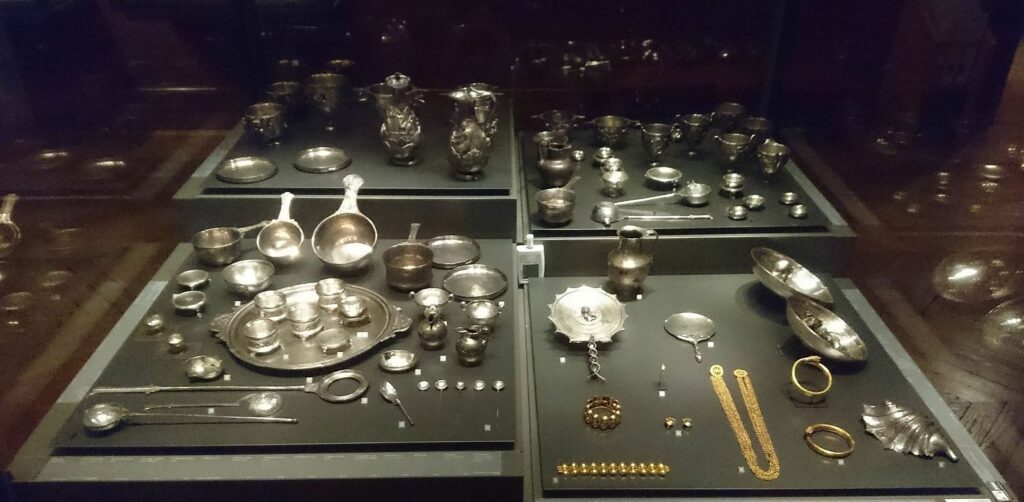
Precious objects of art
After the discovery, De Prisco went to Paris with his friend the antiquarian Ercole Canessa, to try to sell the treasure to the Louvre Museum. The latter refused for lack of funds. Part of the treasure was finally put on the market and bought by Baron Rothschild, who donated it to the Louvre Museum.
The curator in charge of the Department of Greek and Roman Antiquities at the time reported that the 109 objects that entered the Louvre’s collection were exceptionally well preserved. Three different types of silver objects are listed: tableware, ceremonial objects and toiletries. The decorations are borrowed from the animal and plant worlds or from mythology. The technical mastery of metal is exquisite. Some works are majestic, such as the emblem cup, goblets with skeletons or Skyphos type cups which show the virtuosity of the Roman goldsmiths.
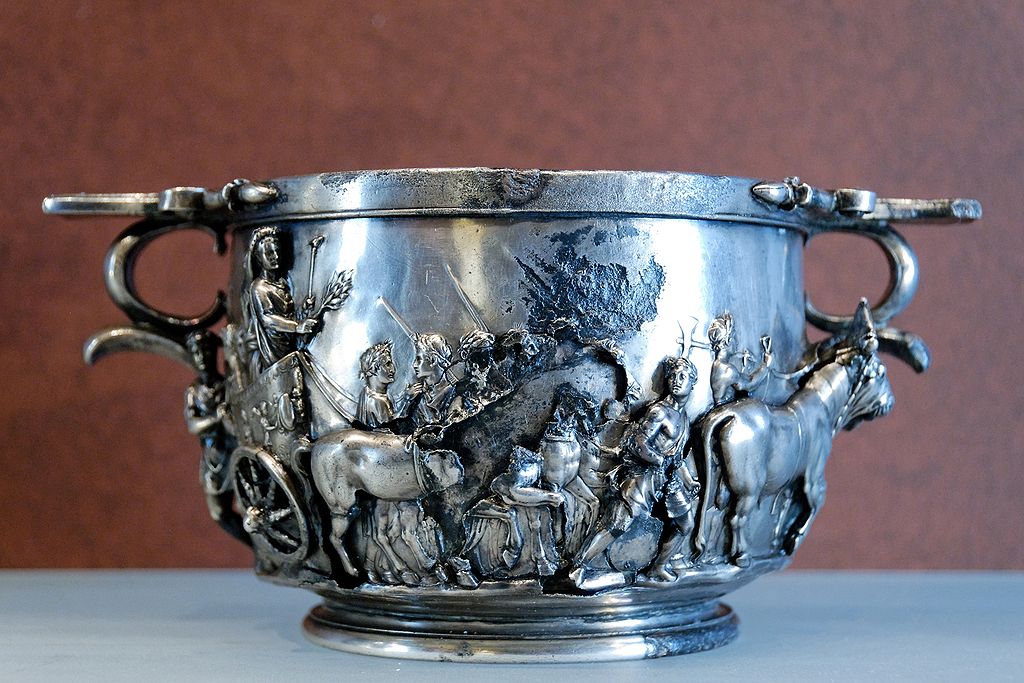
The aureus with Boscoreale tones
Concerning the aureus, Adrien Blanchet, honorary president of the French Numismatic Society at the time, reported the discovery in the Revue Numismatique of 1895, but no precise inventory was made. The rest of the objects were dispersed on the market, in local museums or sold to private collectors. Later publications such as that of C. Canessa in 1909 certainly include coins from other finds.
Jules César Aureus gold – Avers probably Trésor Boscoreale Jules César Aureus gold – Revers probably Trésor Boscoreale
Without affirming with certainty the origin of the Boscoreale treasure, their typical patina allows us to differentiate them clearly.
In sales and catalogs of numismatics, we speak today of the “Boscoreale” patina. Indeed, the color of the aurei coming from the treasure of Boscoreale is quite specific. The coins are reddish, violet and have a brown discoloration. This tone is justified by the volcanic eruption: the intense heat at the time of the eruption, the smoke and then the burial of the coins would have caused this emblematic color. The Boscoreale aureus are often very well preserved and illustrate the skill of the imperial engravers of the first century AD.
Sources :
Bibliothèque de l’Institut national d’histoire de l’art
Wikipedia
ANS Magazine
Colosseo Collection
CGB
Coin Talk
